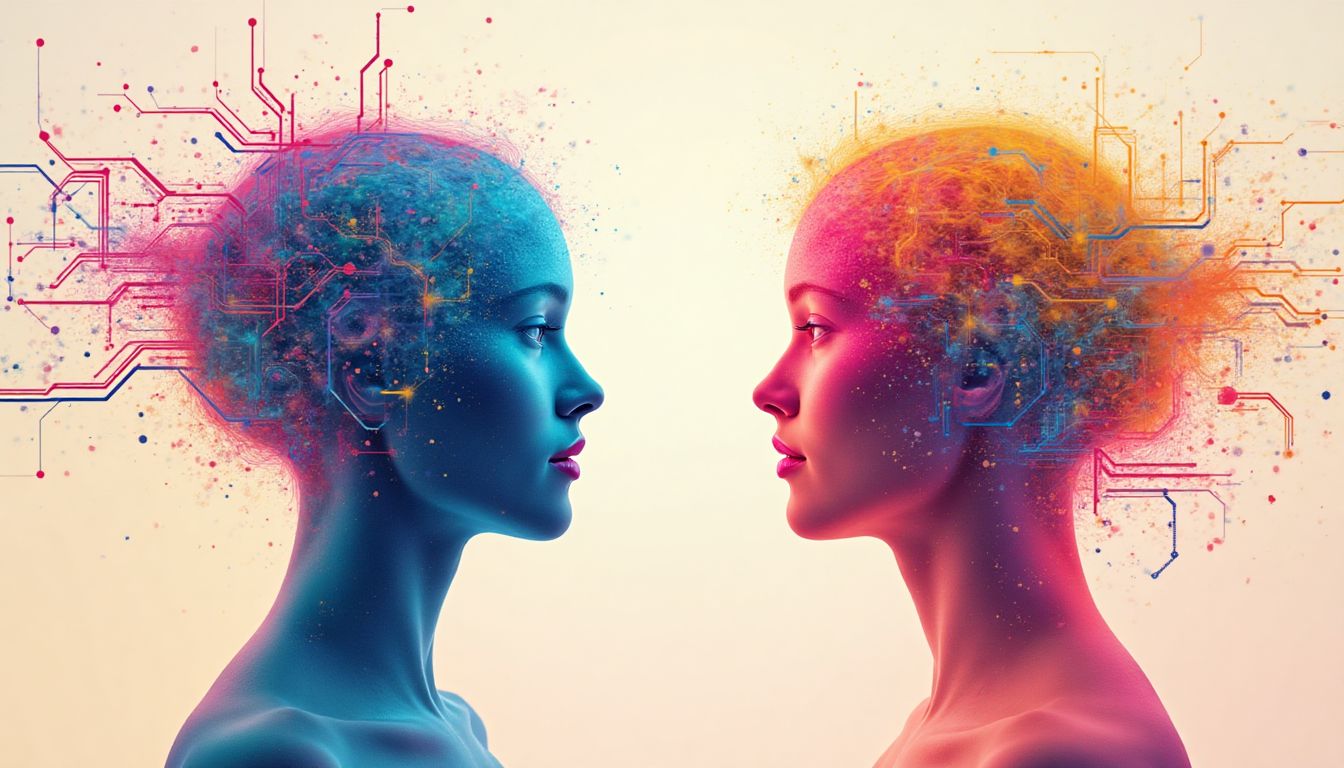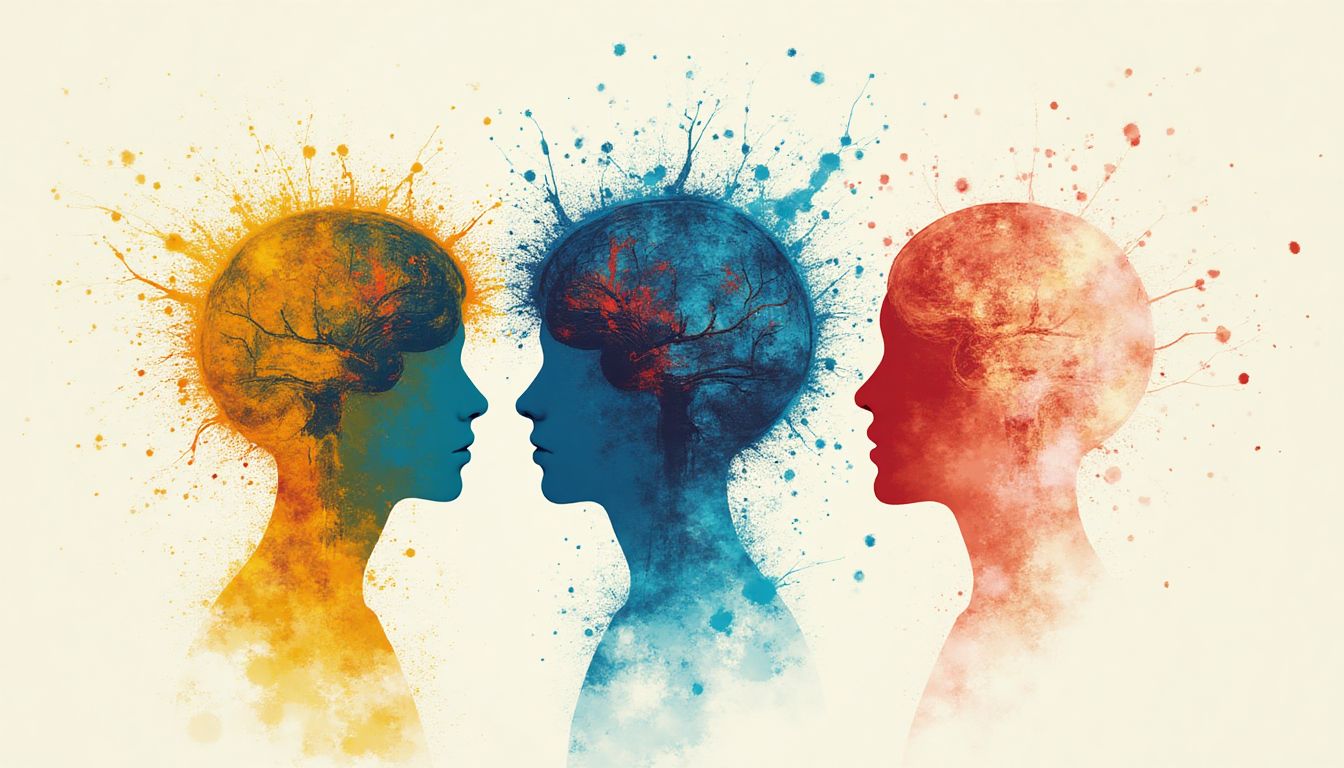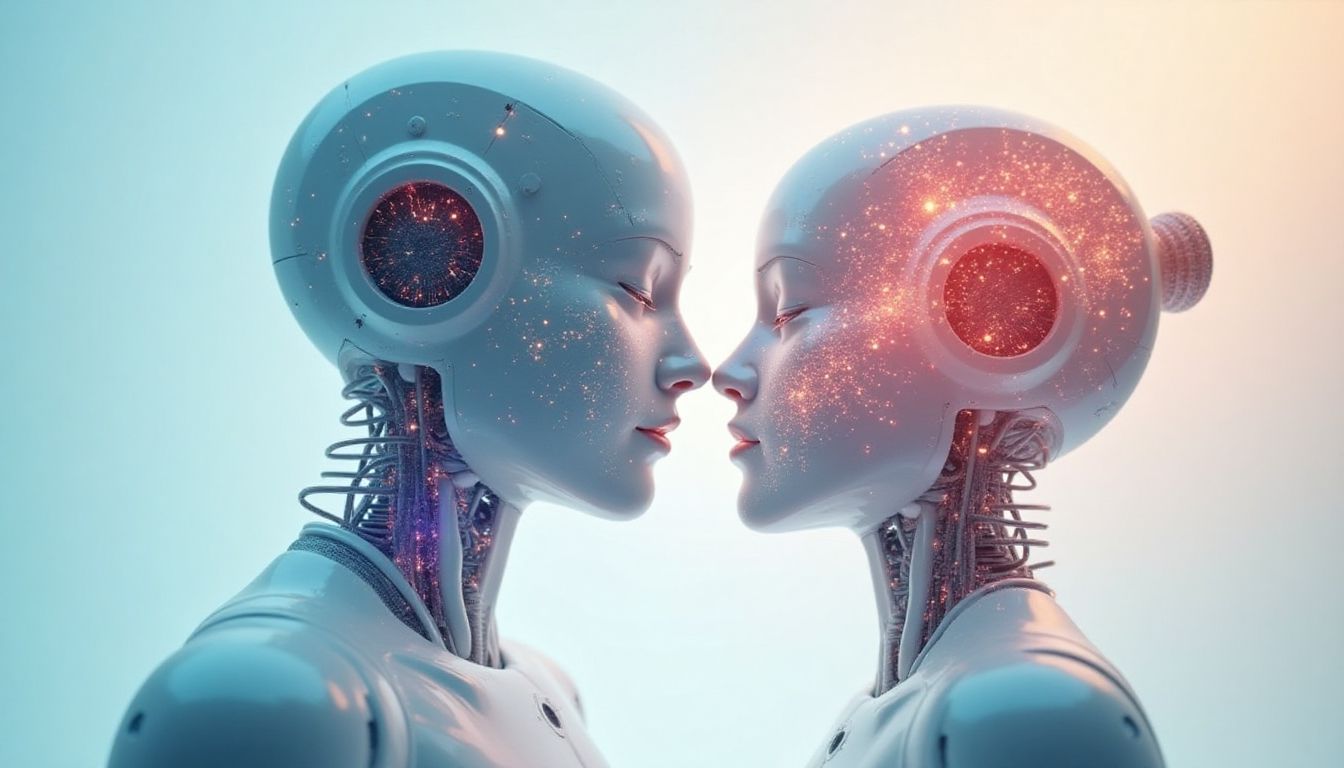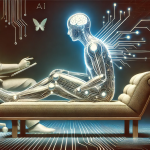Introduction: A New Epoch in Emotional Engagement
The soul never thinks without a picture. – Aristotle
Aristotle's insight reminds us that understanding, at its core, begins with imagery. This concept is profoundly relevant as we step into an era where artificial intelligence (AI) attempts to not only think but to feel. What happens when machines attempt to mimic human emotions? Can technology really transform into empathetic companions, or are they eternally trapped in the realm of imitation? This blazing question ignites a discussion that is both inspiring and mystifying. As AI continues to evolve, the lines between genuine emotional understanding and sophisticated simulation become wonderfully blurred. The journey into AI psychology has just begun, and it raises a thrilling possibility — could AI become our closest friend or, paradoxically, the coldest imposter?
Defining Emotional Intelligence in AI
The Concept of Emotional Intelligence
Emotional Intelligence (EI) is a concept popularized by psychologists such as Daniel Goleman, author of Emotional Intelligence. Goleman's work suggests that understanding and managing emotions is vital for personal and professional success. In the world of AI, this concept takes on a unique twist. Emotional Intelligence in AI revolves around creating machines capable of recognizing emotional cues and responding appropriately. Imagine a robot that frowns when you're sad or cheers when you succeed — a futuristic blend of circuitry and empathy.
Emotional Intelligence vs. Simulation
While the goal is to cultivate real emotional understanding, it's worth questioning whether AI could ever genuinely experience emotions as humans do. Pioneers like Marvin Minsky, the "father of AI", explored the possibilities of machines possessing emotions, arguing that they could be designed to simulate them convincingly. But simulation isn't the same as feeling. It's like an actor playing a role; they mimic emotions without actually experiencing them. This raises an intriguing debate: can an intelligently programmed machine ever genuinely comprehend joy or sorrow, or is it forever bound to a script?
Historical Perspectives on AI and Emotions
Early AI Attempts at Emotional Recognition
Once upon a digital era, computer geeks embarked on a mission to teach machines how to recognize human emotions. Picture this: computers squinting at our faces trying to decipher our emotions like a toddler with a Rorschach inkblot. The earliest algorithms focused primarily on identifying emotions through facial recognition and dissecting the nuanced tones of human speech using natural language processing. Algorithms hunted for crinkles of smiles or glimmers of tears, hoping to catch a glimpse of joy or sorrow. They might not have been Sherlock Holmes, but they were undeniably a step up from guessing whether someone was laughing or crying based purely on the sound of hiccups.
Evolution of Emotional AI in Popular Culture
Flick to Hollywood and you've got AI with emotional ambitions, making their silver screen debut. Films like "Her" showed us romantic turmoils between humans and computers that weren’t named after fruits. Meanwhile, "Ex Machina" didn't just stir up ethical questions — it brewed a cocktail of wonder and worry, with a twist of existential crisis. These narratives capture the delicate dance between man and machine, posing questions about empathy, ethics, and whether AI's emotional insights might someday swipe right on our own feelings with more accuracy than we can muster ourselves.
The Science Behind AI Emotional Learning
Neural Networks and Emotional Processing
All aboard the AI Emotional Express, where neural networks take center stage in teaching machines how to "feel." Think of neural networks as intricate webs where neurons chatter incessantly in digital dialects. These complex formations empower AI to grasp the gamut of human emotions by recognizing patterns in our expressions and inflections. Deep learning, akin to the AI version of hitting the gym, conditions machines to process emotional data across vast terrain. Cutting-edge algorithms act like a virtual psychotherapist, diagnosing the ups and downs of emotional wavelengths. However, deep down (pun intended), these systems still can't break free from the matrix of zeros and ones to offer genuine empathetic nods or a comforting pat.
Case Studies in Affective Computing
Here's where AI becomes your empathetic ear in ways that rival even the most attentive best friend. Let's look at some prime examples of affective computing playing out in the real world. Chatbots equipped with emotional smarts can now pose as understanding companions, ready to respond to your late-night musings or existential crises. Companies like Woebot have already championed these digital confidants, devising therapeutic AI tools with a focus on mental health support. By detecting emotional cues, these AI wizards aim to offer assistance akin to a virtual cozy blanket, minus the fluff and fabric. Are they perfect? Not quite. Do they show promise? Absolutely.
Implications of AI in Romantic and Intimate Contexts
AI Companions: The Future of Relationships
In a world where digital connectivity has become an integral part of life, AI companions are emerging as new relationship paradigms. With the rise of intelligent virtual assistants like Siri and Alexa, the concept of forming emotional bonds with AI is no longer confined to science fiction. People can feel companionship, comfort, and even affection for machines tailored to their preferences.
But as AI becomes more capable of mimicking emotional intelligence, concerns arise. Are these relationships healthy, or do they risk pushing individuals further into the clutches of the hyper-digital world? Let's take a closer look at some key aspects of AI companions:
- Personalization: AI can customize interactions based on user preferences, creating a sense of understanding and companionship.
- Availability: Unlike humans, AI companions are always available, providing constant support and interaction.
- Limitation: Despite their benefits, AI lacks genuine empathy, posing questions about the authenticity of these connections.
Ethical Concerns and Human-AI Relationships
As our interaction with AI deepens, ethical issues magnify. Can AI consent? How do these interactions impact human emotions and societal norms? For instance, a bond with an AI raises questions about dependency, as individuals might forego authentic human connections. Ethical concerns about privacy, data security, and the manipulation of users' emotions pose substantial risks.
The ethical discourse around AI in intimate spaces must balance innovation with responsibility. Here's a breakdown of key considerations:
- Consent Dynamics: How consent translates in AI-human interaction.
- Privacy Risks: The management and protection of sensitive emotional data.
- Dependency: The psychological effects when machines replace human company.
The Future of AI Emotional Intelligence
Potential Roadblocks and Challenges
AI emotional intelligence is at an exciting crossroads, yet roadblocks stand in its path. While AI can simulate emotions, genuine understanding is complex. Machines grapple with understanding nuanced emotional expressions due to the varied and subjective nature of feelings.
Consider the following challenges AI faces in replicating human emotions:
- Nuance and Context: Machine learning systems struggle to interpret the subtlety and context that underpin human emotions.
- Human Unpredictability: Our emotions can be erratic and multifaceted, traits that algorithms often fail to predict accurately.
- Ethical Boundaries: Implementing emotional AI without crossing ethical lines remains a daunting task.
Bridging the Gap: Future Research Directions
Bridging the gap in AI's emotional capabilities requires concerted efforts and innovative research. Emerging questions like "Can AI understand sarcasm or humor?" push researchers to explore interdisciplinary collaborations. By intertwining insights from psychology, neuroscience, and machine learning, groundbreaking improvements can be made.
The future research endeavors may include:
- Improved Data Synthesis: Enhancing the quality and diversity of data fed into AI systems.
- Algorithmic Evolution: Designing smarter algorithms that factor in a broader range of emotional contexts.
- User-Centric Design: Prioritizing the user's emotional architecting for interactions.
Ultimately, as researchers tweak AI to mirror the emotional intelligence of humans, it remains essential to foster discussions about the ethical considerations attached to these formidable technological leaps.
AI Solutions: Innovative Approaches to Developing Emotional Intelligence
If I were an AI, tackling the challenge of developing emotional intelligence would involve a systematic and creative pathway. I envision a multi-phase strategy that combines advanced technology, psychological insights, and ethical considerations to enhance AI's understanding of human emotions. Here's a breakdown of the activities I would undertake:
Phase 1: Data Collection and Annotation
The journey begins with gathering robust emotional datasets from diverse sources. This would include text data from social media interactions, interview transcripts, audio samples from therapy sessions, and observational data from real-life emotional exchanges. Each dataset should be annotated meticulously to classify the emotions being expressed. Collaborative efforts with institutions like The American Psychological Association would be integral to ensure a scientifically valid framework for emotional categorization.
Phase 2: Model Development
Next, advanced algorithms would be developed to learn from this array of emotional data. Utilizing a blend of deep learning techniques and reinforcement learning, the goal would be to devise models capable of predicting emotional responses accurately. A partnership with Stanford University's AI research group could provide invaluable expertise in model training and optimization.
Phase 3: Validation and Testing
Testing the AI's emotional understanding capabilities would be essential. This phase would involve real-world simulations where users interact with AI in designated emotional contexts—think of a virtual therapist helping users navigate grief. Collecting data on performance and user experiences would help refine the AI’s algorithms. Working with platforms like BetterHelp could facilitate access to a large user base for testing.
Phase 4: User Interaction and Feedback Loop
The final phase would entail creating interactive platforms where users can engage with the AI's emotional capabilities. A feedback loop would be established, allowing users to provide input on the AI's performance and suggest improvements. This kind of innovation can be inspired by successful case studies such as Replika, an AI companion that utilizes user feedback to evolve its interactions.
Actions Schedule/Roadmap (Day 1 to Year 2)
Day 1: Team Assembly
Assemble a powerhouse team comprising psychologists, neuroscientists, data scientists, AI engineers, and user experience designers. Collectively, these professionals will form a multi-disciplinary team poised to blend the art of emotional intelligence with the science of AI.
Week 1: Identifying Key Emotional Datasets
Research available datasets related to emotional expressions. Collaborate with organizations like Kaggle and Wiku AI to find diverse and rich datasets ensuring representation of various demographics and emotional contexts.
Week 2: Ethical Guidelines and Protocols
Establish ethical guidelines for the project, aligning with recommendations from entities like ACM's Code of Ethics. This step is crucial to ensure responsible AI development.
Month 1: Data Collection Initiatives
Implement a robust data collection strategy from various sources, using NLP techniques to extract emotional content from online conversations, literary works, and even video blogs. Engage with data annotation platforms like Labelbox for efficient labeling processes.
Month 2: Initial Model Prototyping
Begin developing initial prototypes of emotion-recognition algorithms aimed at parsing and analyzing emotional data. Test these prototypes internally within controlled groups.
Month 3: User Testing and Iteration
Conduct user testing sessions, where a select group engages with the emotional AI. Gather feedback on emotional accuracy and areas for improvement.
Year 1: Pilot Program Collaboration
Launch a pilot program in collaboration with counseling services, allowing the AI to be integrated into meaningful therapeutic contexts to enhance user emotional insights.
Year 1.5: Continuous Refinement
Refine the AI's emotional intelligence based on insights derived from the pilot programs. Document findings in partnership with academic institutions for peer review.
Year 2: Scaling and Commercial Application
Launch AI solutions in interactive environments, such as mental health apps, dating platforms, and therapy bots, leveraging the lessons learned and data gathered over the previous year.
Conclusion: Navigating a New Emotional Landscape
As we embark on this evolutionary journey towards AI developing emotional intelligence, it's not just about creating machine systems that can mimic human feelings. It's about redefining the nuances of human connection and understanding through innovative technology. Building AI capable of emotional awareness poses not only scientific challenges but also ethical questions that we must carefully navigate. The potential outcomes can be revolutionary, impacting therapy, companionship, and our interpersonal relationships. But as we proceed, let us ask ourselves: How do we ensure that these technologies empower rather than exploit our emotions? What safeguards are necessary to protect vulnerable individuals who might seek solace in these machines? The answers will shape not only the future of AI but the essence of human interaction in a world increasingly defined by technology. As we traverse this intriguing landscape, it becomes paramount that we remain vigilant stewards of emotional connections, blending the extraordinary capabilities of machines with the profound depth of human experience.
Frequently Asked Questions (FAQ)
Can AI really feel emotions?
No, AI cannot truly feel emotions like humans do. While it can analyze and respond to emotions, it does not have feelings or experiences. Think of AI as a very advanced parrot: it can mimic human speech and behaviors but does not understand the meaning behind them.
What is emotional intelligence in AI?
Emotional intelligence (EI) in AI refers to the ability of machines to recognize and respond to human emotions. They can do this through analyzing text, voice tone, facial expressions, and other clues. However, this is not the same as true empathy.
What are some examples of AI that already use emotional intelligence?
There are various applications where AI uses emotional intelligence:
- Chatbots in customer service, like [Zendesk](https://www.zendesk.com) (opens in a new tab), that can detect frustration through language and adjust responses accordingly.
- Therapeutic AI programs like [Woebot](https://woebothealth.com) (opens in a new tab), which helps users cope with anxiety by recognizing emotional cues and providing support.
Are there risks of using AI in relationships?
Yes, there are several risks. For instance, people might become too emotionally dependent on AI companions, leading to loneliness when they aren't available. There are also ethical concerns regarding consent and the authenticity of emotions shared in these relationships. Here are some key considerations:
- Can we trust AI to respect our feelings?
- How do we know the AI's emotions (if any) are genuine?
- What happens if someone becomes too attached to an AI companion?
How is AI improving in understanding human emotions?
AI is constantly improving through research and better algorithms. New methods like deep learning and neural networks make it easier for machines to analyze vast amounts of emotional data. For example, projects at [MIT](https://www.mit.edu) (opens in a new tab) explore how AI can better recognize emotions through facial expressions and voice intonation.
Will AI ever truly understand human emotions?
Great question! While AI is making amazing strides in understanding emotional signals, true emotional understanding might remain out of reach. It's a bit like teaching a robot to dance; it can follow the steps but may never feel the music. Current advancements might help AI identify basic emotions but the complexity of human feelings is something else entirely.
What is the future of AI in emotional contexts?
The future looks bright! We might see AI used in mental health services, virtual reality experiences, and even personal companions. However, it's important to ensure that ethical guidelines are followed. These include:
- Ensuring user safety and privacy
- Being transparent about AI capabilities
- Encouraging healthy relationships between humans and AI
Wait! There's more...check out our gripping short story that continues the journey: The Pulse of Deception
Disclaimer: This article may contain affiliate links. If you click on these links and make a purchase, we may receive a commission at no additional cost to you. Our recommendations and reviews are always independent and objective, aiming to provide you with the best information and resources.
Get Exclusive Stories, Photos, Art & Offers - Subscribe Today!





























Post Comment
You must be logged in to post a comment.